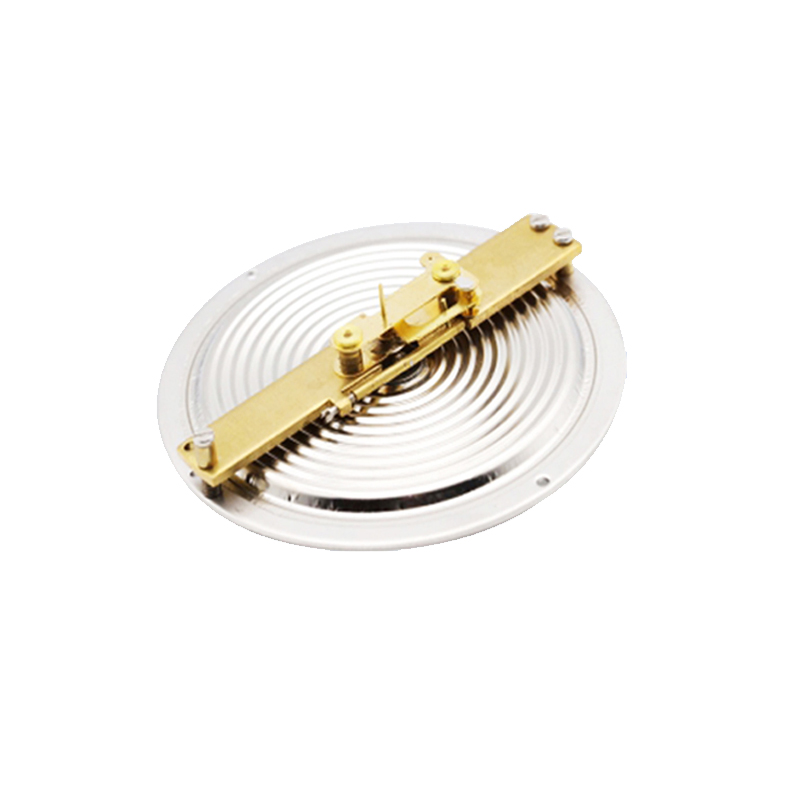
Jul . 28, 2024 11:34 Back to list
Understanding Diaphragm Pressure Sensing Elements and Their Applications in Modern Technology
Understanding Diaphragm Pressure Sensing Elements
Diaphragm pressure sensing elements are crucial components in the realm of pressure measurement and monitoring. They play a vital role in various industrial applications where precise pressure readings are essential for maintaining safety, efficiency, and reliability. This article explores the function, advantages, and applications of diaphragm pressure sensing elements, shedding light on their significance in modern technology.
What is a Diaphragm Pressure Sensing Element?
A diaphragm pressure sensing element is a device that converts pressure into an electrical signal. It typically consists of a flexible membrane (the diaphragm) that deflects in response to pressure changes. This deflection is proportional to the applied pressure and is converted into an electrical output through various types of sensors, such as strain gauges or capacitive sensors.
Diaphragm pressure sensors can measure different types of pressure, including absolute, gauge, and differential pressure. The design and material of the diaphragm can vary considerably based on the application requirements, including factors like temperature, corrosiveness, and pressure range.
Advantages of Diaphragm Pressure Sensors
1. Accuracy and Sensitivity One major advantage of diaphragm pressure sensing elements is their high sensitivity and accuracy. The design allows for precise measurements, which is vital in applications where small pressure variations can lead to significant operational changes.
2. Robustness Diaphragm sensors are often made from durable materials such as stainless steel or special alloys. This resilience enables them to function effectively in harsh environments, including high temperatures and corrosive substances.
3. Versatility Diaphragm pressure sensors can be customized to measure varying pressure ranges and types, making them suitable for diverse applications across multiple industries, including oil and gas, pharmaceuticals, and manufacturing.
diaphragm pressure sensing element quotes

4. Minimal Maintenance Due to their simple construction and robust materials, diaphragm pressure sensing elements generally require minimal maintenance, which contributes to lower operational costs.
Applications in Various Industries
Diaphragm pressure sensing elements are utilized in numerous sectors due to their reliability and precision. Here are some notable applications
- Oil and Gas Industry In this sector, diaphragm sensors are critical for monitoring pressures in pipelines and storage tanks. Accurate pressure readings help prevent leaks and ensure safe operational practices.
- Automotive Engineering Diaphragm sensors are employed in vehicles for various functions, including tire pressure monitoring and engine management systems, ensuring optimal performance and safety.
- Medical Equipment In the healthcare industry, diaphragm pressure sensors are integral to devices like ventilators and blood pressure monitors, where accuracy in pressure measurement is vital for patient safety.
- HVAC Systems These sensors are used in heating, ventilation, and air conditioning systems to monitor and control air pressure, ensuring efficiency and comfort in residential and commercial spaces.
Conclusion
In conclusion, diaphragm pressure sensing elements are indispensable tools in modern engineering and technology. Their ability to provide accurate pressure measurements in diverse environments ensures their continued relevance across various industries. As technology evolves, innovations in diaphragm sensor design and materials will likely enhance their performance, broadening their application even further. For anyone involved in pressure-sensitive industries, understanding and implementing diaphragm pressure sensing technology is crucial for achieving operational excellence and safety.
-
High-Precision 5 Valve Manifold Differential Pressure Gauge Suppliers
NewsApr.29,2025
-
High-Precision Diaphragm Vacuum Pressure Gauges Manufacturers & Quotes
NewsApr.29,2025
-
Omega Differential Pressure Gauges High Accuracy & Durability
NewsApr.28,2025
-
Low Pressure Differential Pressure Gauges Precision Solutions & Quotes
NewsApr.28,2025
-
Digital Diaphragm Pressure Gaauge Precision Measurement & OEM Quotes
NewsApr.28,2025
-
Differential Pressure Gauge China Price High-Accuracy & Best Quotes
NewsApr.28,2025
